“Every day’s ramble showed me fresh wonders,” wrote Marianne North about one of her journeys, but she could have been summing up her entire life.1 As a Victorian botanical artist, she traveled, mostly alone, to every continent except Antartica painting the world’s flowers and vegetation en plein air. When she made her independent voyages to places like Chile, Japan, Borneo, the Seychelles, Java and Australia in the second half of the 19th century, most women did not venture out by themselves. What made her so capable and so immune to society’s conventions? I had to find out.
Unlike North, I dislike traveling completely on my own. Although I will happily join a group tour, the thought of heading out to a distant destination entirely alone fills me with dread and loneliness. Maybe if I learned more about North and her life, she could teach me a thing or two that would help me solve my personal distaste for solo travel?
Well, friends, how about learning a thing or twenty. My closer look at Marianne North proved fascinating and I think you will be enthralled by her too.
Disrupting the standard norms of her day, North revolutionized botanical painting and science in profound ways. Most significantly, North depicted species in the context of their natural habitat, unlike her contemporaries who isolated individual plants against a neutral background. She also eschewed the conventional medium of watercolor for botanical studies, which tends to fade over time, for oil.
North painted exactly what she saw and everything is shown with long lasting accuracy. Her precise depictions rendered at a time when photography was not commonly used to record scientific study and GPS locations were not routinely noted, continue to be hugely important to plant research. North’s work has led to the discovery of five new species (one as recently as 2021) and an entire genus, all named after her.2 It also offers people a glimpse of a spectacular world that most will never see and many may not even imagine. Her canvases explode with vivid color and detail. Even Charles Darwin was impressed and became a fan. It was Darwin who encouraged North to undertake an examination of plant life in Australia.
Travel was always a big part of North’s existence so her ability to journey alone did not come out of the blue. She was born into a wealthy and well-connected family and regularly moved between town and country homes. At age 17, North joined her family on a more ambitious trip around Europe which sowed the early seeds for both true adventure and the forbearance to withstand the hardships of the road. When the family encountered a siege and several revolutionary uprisings abroad, North described the events as giving them a lasting “vivid horror of war. ”3 Nevertheless, the family persevered in their journey and remained abroad for three years.
North’s dedication to her work plus an ability to adapt to changing circumstances also surfaced in her youth. Music, not art, was her first love. Said to sing in a rich contralto, North wrote that while on that first European trip, she often spent as much as eight hours a day at the piano.4 Despite her commitment to song, when her voice broke shortly after her return home, she quickly pivoted to art instead.
When her mother was dying in 1855, she extracted a vow from North to never leave her father which North upheld. Father and daughter continued to travel extensively throughout Europe and the Middle East and lived pleasantly when back in England until his death. The two were extraordinarily close and she developed her lifelong passion for plants with him. Together they tended to orchids and other temperate species in the three small greenhouses he had built for her at their home in Hastings, England. When in London, the pair often visited Kew and Chiswick Gardens. One time, when she was around 24, Kew’s director Sir William Hooker gifted North with a bunch of flowering “Amherstia noblia” that she later attributes to her longing to see the tropics.5
Grief from her father’s death in 1869 drove North to her lifetime’s work. Initially she was bereft. “For nearly forty years, he had been my one friend and companion, and now I had to learn to live without him…” she wrote.6 It was then that North chose to devote herself to painting from nature, seeking solace in the “lovely world” around her.7 Having inherited her father’s wealth, she had the means to realize her goals.
By now a well-seasoned traveler, North sold the house in Hastings, keeping only the London flat she shared with her father, and set sail for North America for her first independent journey in July 1871. She was 41 years old. Jonathan Farley, Kew’s senior conservator believes that North’s exposure on that trip to the brilliant fall foliage in America underpinned her decision to depict trees and plants in their surrounding environment. 8
After seeing Niagara Falls and traveling into Canada, she finally made her way to Jamaica in time for Christmas. When her steamer docked at Kingston, North described feeling “entirely alone and friendless.” 9 Reading that about her made me feel better—it wasn’t always easy apparently! Yet she stayed in Jamaica for five months so enchanted by her surroundings that “she hardly knew what to paint first”.10
North continued to take far flung voyages by herself for the next fifteen years, usually staying away from England for several years at a clip and painting over 1000 plants during this period. Imagine the sight of her in her full Victorian dress, hiking daily into the wilderness with her easel. North writes both about the glorious beauty she encounters and her troubles with ticks, snakes, storms, broken bones, typhous and the frequent lack of fresh drinking water. She had such fortitude! If she could stay in a hut in the Brazilian rainforest for one year (you couldn’t pay me to do that), surely I could board a long haul flight alone in an upper class cabin!11
After a private gallery in London held an exhibition of her works, North sought a permanent home for them. She approached the current director of Kew Gardens, Sir James Hooker, to bequeath her paintings and offered to build a gallery to house them. He readily agreed.
North mandated that her artwork always be displayed in accordance with her wishes and she went on to design the gallery’s interiors. North created a ‘gesamtkunstwerk’— German for a total work of art— for her gallery, attending to every detail. Before I even opened the door on my recent visit to it, I could hear the peels of children’s laughter inside. The kids couldn’t help but run around in glee, absorbing the treasure trove of vibrant color and energizing pattern emanating just over the threshold.
Every surface of the gallery blooms with lush flowers and vegetation, including the doors and their surrounding molding. Over 800 of North’s striking, exotic paintings hang densely floor to ceiling on the walls, salon style. Framed in black and gold, the better to enhance the rainbow of hues in the works themselves, each piece touches its neighbor on all sides. Even the brass door hardware is tooled on theme to show leaves and birds. When North’s hope that the gallery would offer tea and coffee to visitors was not realized, she coyly hand painted tea and coffee plants on the door surrounds as a nod to her abandoned idea. The gallery is lit largely by clerestory windows set on a mezzanine above a neoclassical-revival frieze. Above the frieze are labels for North’s far flung destinations painted in gold that provide a guide to the art below. An encaustic tile floor in black, red and yellow is laid in a geometric pattern that complements the flora covering the walls and doors.
Located in a relatively remote part of Kew away from the garden’s more famous glasshouses and giant pagoda, the gallery is a gem for those who take the time seek it out. Even if you can only get as far as London, you will be rewarded with a peek at the Garden of Eden found by one singular woman with an extraordinary character. Now that I have visited, I am hoping some of North’s resilience, curiosity, strength and vision will rub off on me so I can get myself to all of the destinations I dream of seeing.
Bon voyage,
Lynn
Marianne North in South Africa, 1883

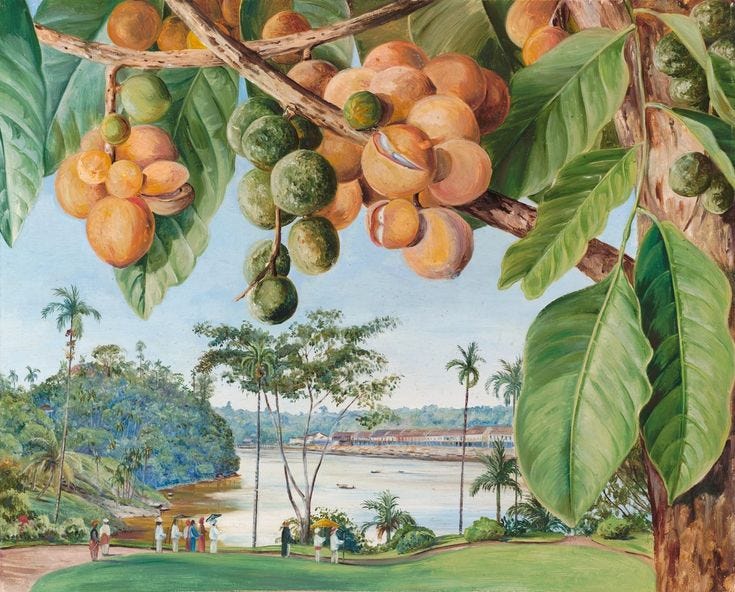
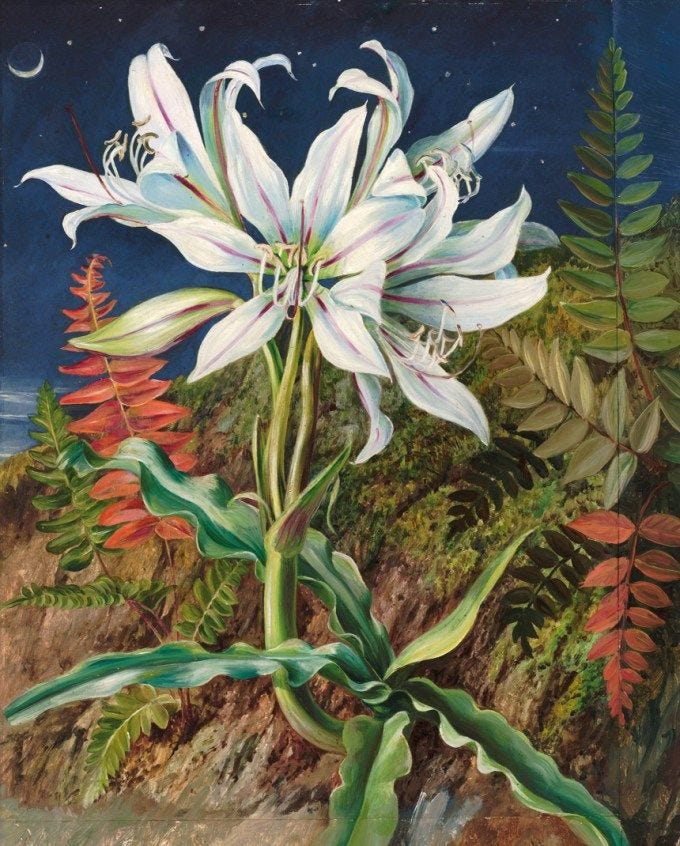
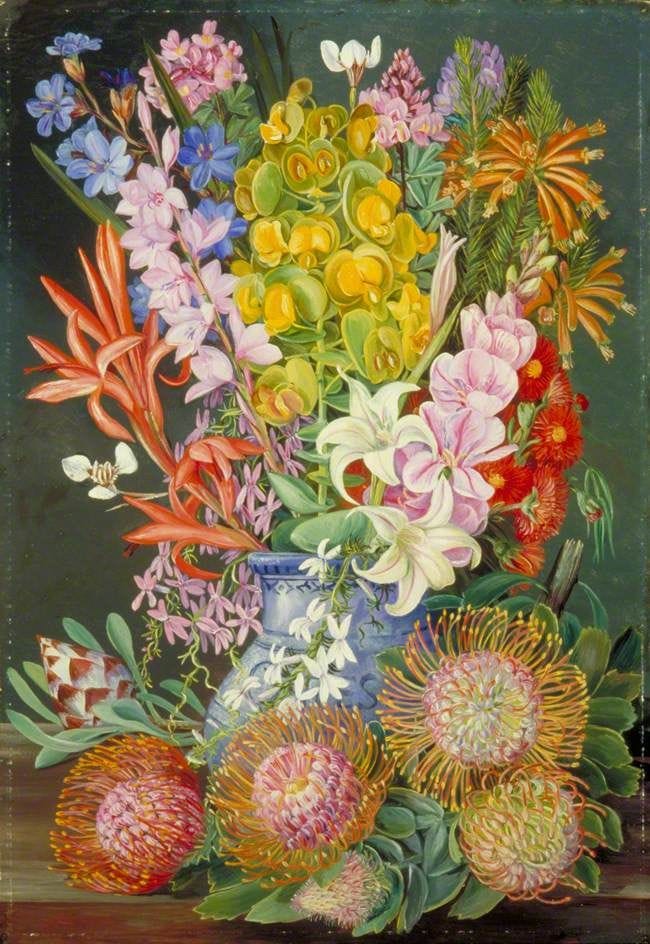

The Marianne North Gallery at Kew Gardens has been the only gallery in Britain dedicated to a single female artist for over 100 years. Photographs below by Lynn Byrne, except for the last image via atlas obscura.
Credits: All paintings by Marianne North. Wikiart. Photo of Marianne North in the common domain.
Post Scriptum
Quebec City might be my first trip solely by myself for my birthday. Does anyone know if I should stay at the castle on the hill or in the old town? Seeking all recs.
For those requiring evening wear, I have current tips. I just got my “Mother-of-the-Groom” dress (following the guidelines that it should be full length and navy which helped me narrow it down) and I can confirm that Nordstrom, Saks, Bloomies and Bergdorfs all had about the same things, but Nordstrom has the best ship and return policies plus free alterations.
If you love New York City, The Doorman by Chris Pavone merits a spot on your summer reading list. It’s a gossipy hoot and unlikely to take you more than a week to finish.
Marianne North, A Very Intrepid Painter by Michelle Payne, Kew Publishing, Revised Edition, page 6.
A Very Intrepid Painter, page 6.
A Very Intrepid Painter, page 7.
A Very Intrepid Painter, page 8, from North’s autobiography Recollections of a Happy Life.
A Very Intrepid Painter, page 8, from North’s autobiography Recollections of a Happy Life.
A Very Intrepid Painter, page 22.
A Very Intrepid Painter, page 22.





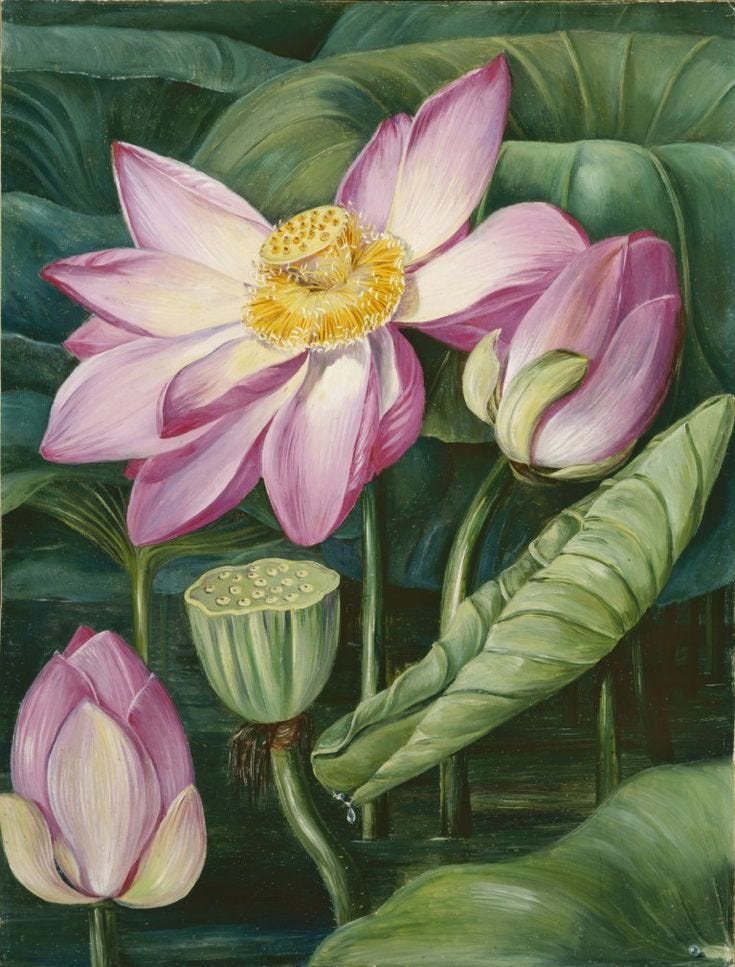

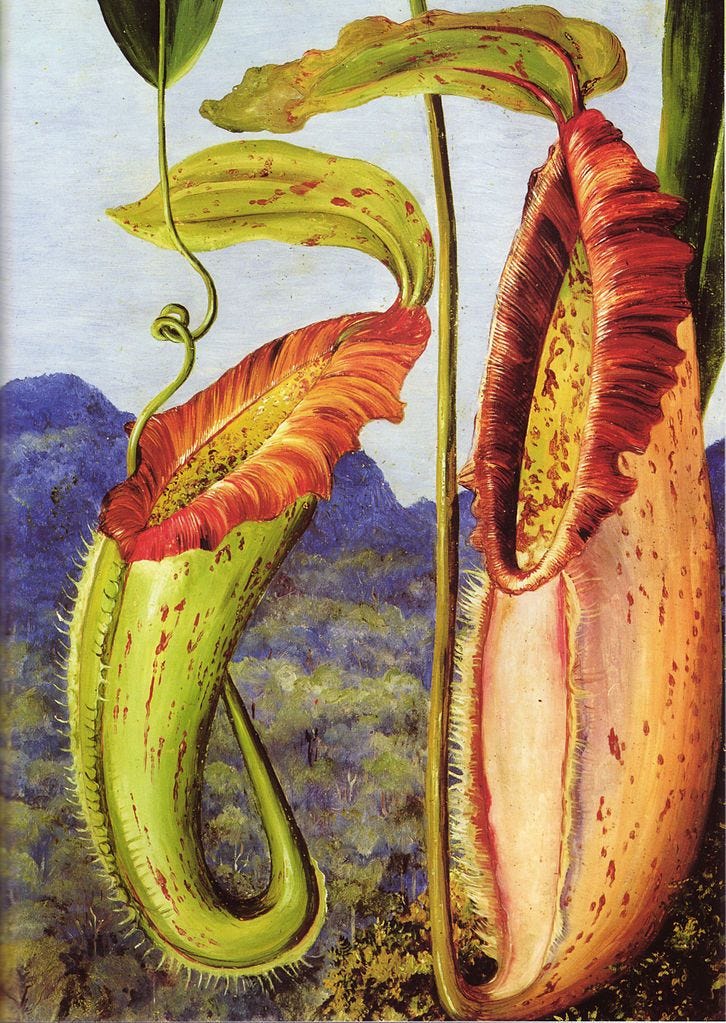

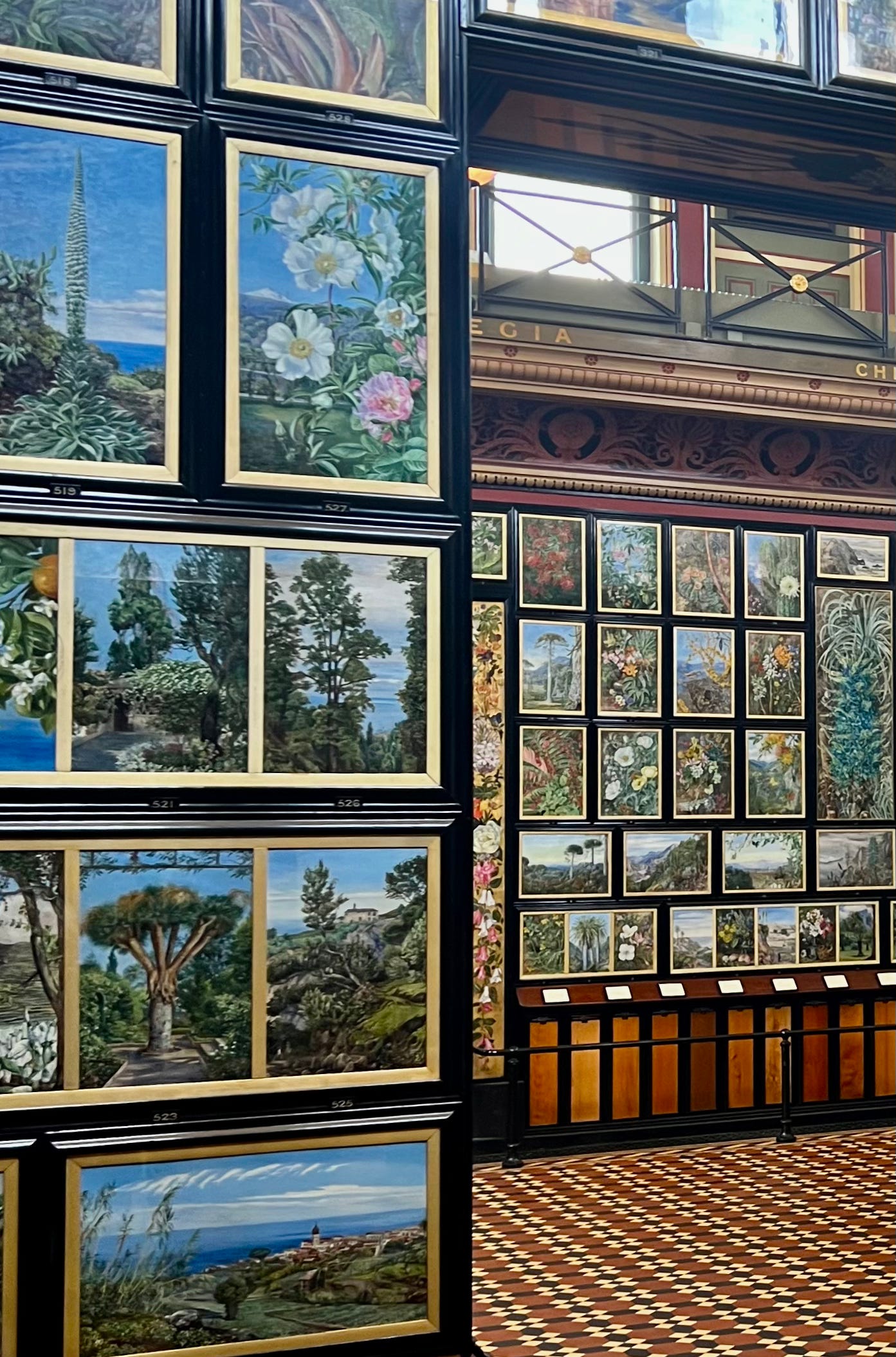
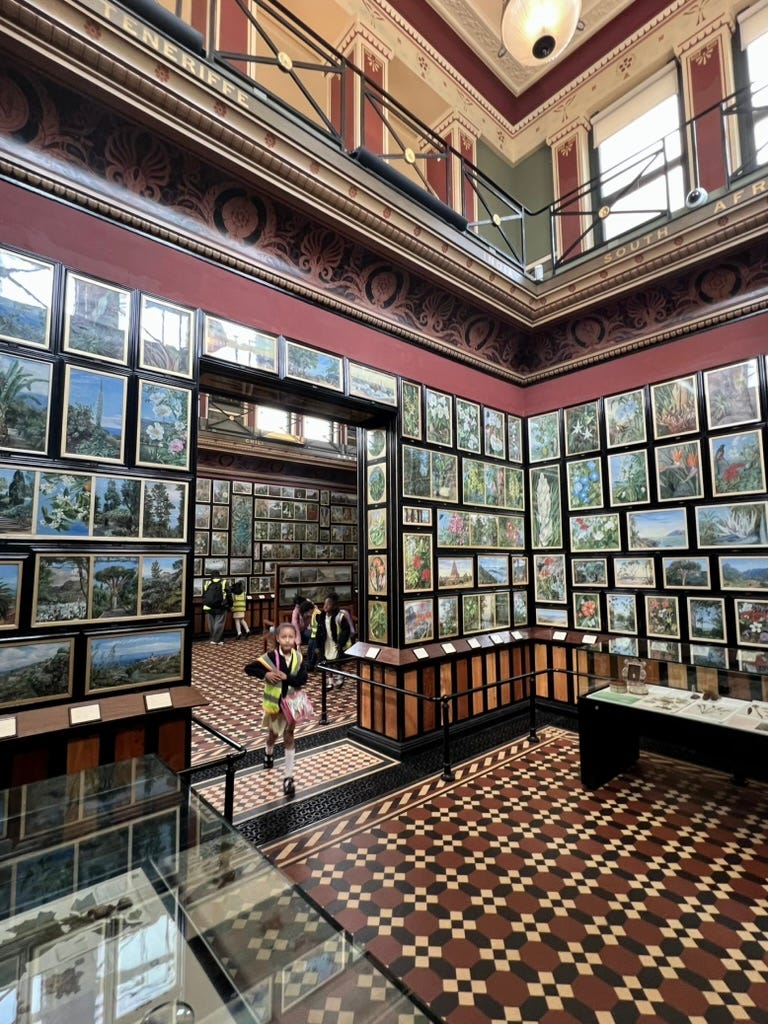
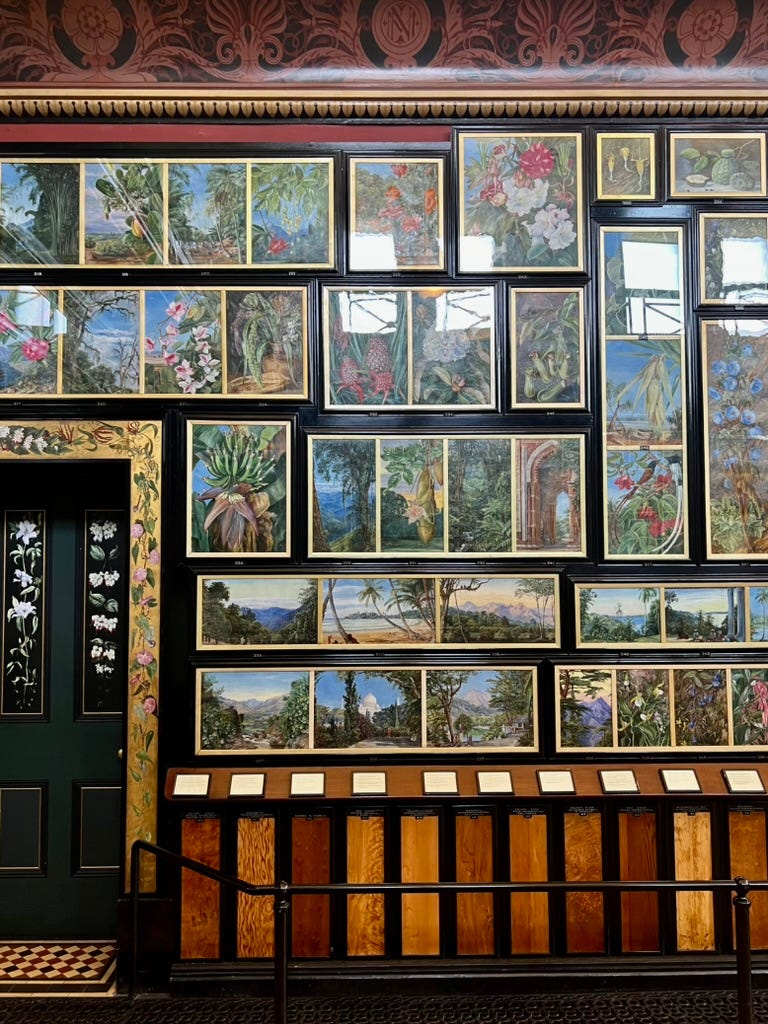


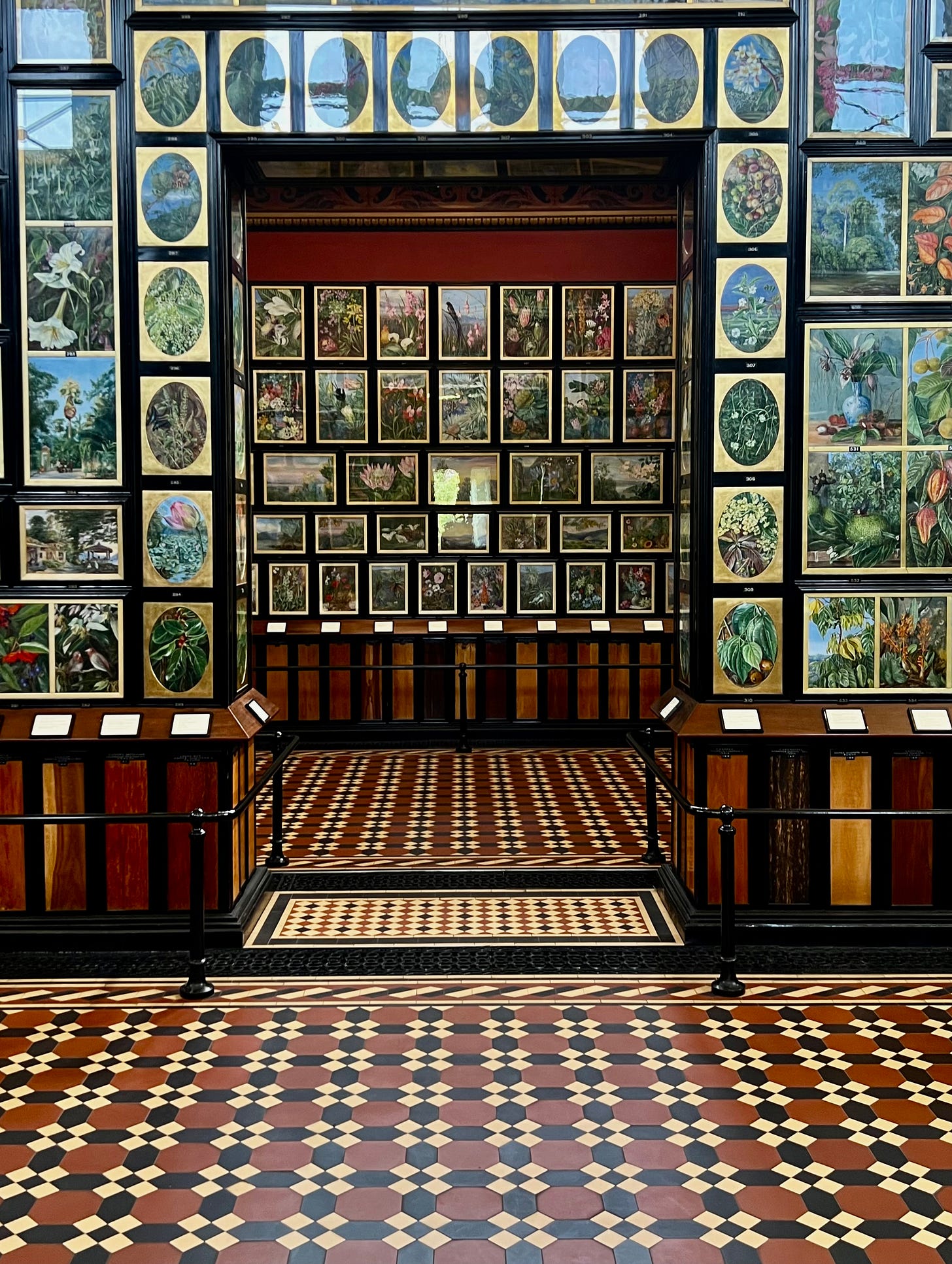

I've never been to Kew, but when I get there I'm definitely going to make a beeline for the Marianne North Gallery.
As for Quebec City, do stay at the Château Frontenac. It's one of N. America's great historic hotels, of course, and the location is great for access to both the upper and lower old towns. The historic centre is all very walkable. The views of the river will needless to say be stunning, if not from your room then from the common areas or the Dufferin Terrace, the pedestrian esplanade out front.
Very envious. Can't wait to be back in London to see it. What a fascinating woman.